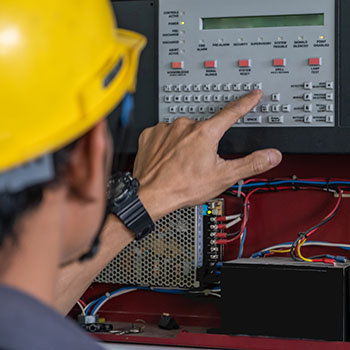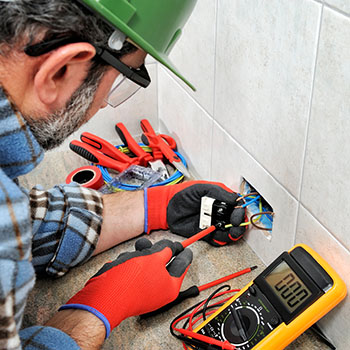Careers
Metro Detroit Computer Network Wiring Installation
Our Cable Guy is the leading network data cabling installation company in the Metro Detroit Area.

Open Positions
Low Voltage Data Installation Tech
Hiring NOW! Start your career with Our Cable Guy. We will train someone with basic construction experience for a great career
- Experienced Data & Security Cabling – Network Installation $41K-$90K Our Cable Guy, a leader in cabling and infrastructure technologies, is seeking an experienced Low-Voltage Installation Technician to join our team in the Metro Detroit area.
What We Offer:
- Paid Holidays & Lunch
- Paid Weekly
- Training on cutting edge new technology
- OSHA Training
- Pays $20 -$30 per Hour Depending on Skill Level
- Health and Vision Insurance
- Travel Reimbursement
- Vacation Time
Schedule: 9a-5p (M-F) [subject to change with client needs]
Construction Based Job, we work on lifts, warehouses, office complexes, must be able to lift 50lbs and ladders when needed. Travel is rare, perhaps 2 twice per year.
We are looking for an individual who is detail oriented and can work in a fast paced environment. This is a hands-on position that will teach you how to install and troubleshoot cable while working as a team to get a job done.
You must have: Reliable transportation, a valid driver’s license, and pass pre-employment screening requirements. Able to carry 6FT Ladder with you.
You must have basic tool kit: Cordless Drill, HandTools, etc.
Interview NOW, Hiring ASAP. Permanent Position.
Basic Job Functions:
- Commercial installation, termination, pull, repair and replace low voltage cables for data, voice and security cameras.
- Install cable supports, equipment racks and trays.
- Terminate data jacks and patch panels.
- Know industry standards/color codes.
- Safety — job sites, tools, personal.
- Work as a team or independently.
- Excellent communication skills.
- Physical work — up/down ladders, overhead, pull, push, lift, bending.
- ** Conduit bending or Fiber Optic knowledge a Plus!
Voice & Data Estimator
Job Description
A career with Our Cable Guy entails commercial technology services to include structured network cabling installation. This is a great career opportunity for the right person.
Position Summary
Seeking an experienced estimator for a permit opportunity. The ideal candidate will assist with estimating and vendor management for low-voltage projects.
Job Responsibilities
- Create an estimate design document and specifications using ISB/OSP industry best practices for all media types, structured cabling systems, backbone cabling, grounding and bonding, pathways and space, fire stopping, technology systems, wireless, etc.
- Assist with developing scopes of work and creation of design and project management proposals.
- Collaboration with clients, team members, designers, subcontractors, vendors, and end-user groups throughout project design, bid, and construction planning.
The ideal candidate will possess the following:
- Minimum of 3+ years of commercial experience
- Must be able to design/estimate utilizing industry best practices for all media types
- Needs to have proven skills and understanding of design, consulting, bid administration, and construction administration
- Must be proficient in reading/interpreting construction project documents, including architectural, electrical, mechanical, and telecommunication schematics, drawings, specifications, timelines, and other relevant project documents
- CAD experience is preferred
-
- Safety — job sites, tools, personal.
- Work as a team or independently.
- Excellent communication skills.
- Physical work — up/down ladders, overhead, pull, push, lift, bending.
- ** Conduit bending or Fiber Optic knowledge a Plus!

How To Guide: Network Data Cabling Installation
Some tips from our professional technicians for your office network cabling installation project can be found
on our social media channels and BLOG!
Network Cabling Tips
Grommet
Grommets are sometimes also referred to as a bushing or an eyelet. No matter what you may call it, they are all still used the same way. Picture this; during a new construction project, you drill a whole at the top of a metal wall frame to run your cables down the beams. A grommet is inserted after you drill the hole so that the cables are not ruined by the sharp hole.
Cable Pathways
Whenever you are pulling cable, you have to have a plan otherwise everything could fall apart.
- Arteries: Arteries are the main horizontal pathways when an installer is pulling cable. These pathways will lead you back to your MDF and your IDF.
- Branches: Like its name, these cables branch off of the main pathway to go down a pole, wall or column to the end location
Pulling Methods
As mentioned in “Cable Pathways”, you have to have a plan. Below are some of the common methods of pulling cable.
- Far Point
- Pull Feed
- Pull Back
- Push Pull: Typically used when you encounter errors.
- Drop Back: Typically used when you encounter errors.
- Coil Feed
- Coil Toss
Cable Delivery Method
In most cases, you will encounter one or more of the following type of installs.
- Open: Just as it sounds, this deals with open ceilings, raised floors and/or surface walls. An installer would utilize J-Hooks, Cable Slings, Bridle Rings, D-Rings and Tie-Wraps
- Enclosed: An installer would utilize conduits, floor ducts, walls, inner ducts, cellular floors and/or columns.
- Confined: An installer would utilize a cable tray, furniture raceway, perimeter raceway and/or power poles.
Labeling
Always ensure that you label each cable. While there are many methods, utilizing at least one of them will save you headaches down the line. The most common labeling methods is by marking it with a sharpie or using a flag or wrap around printed label.
Cable Guy Fun Facts
Grommet
Grommets are sometimes also referred to as a bushing or an eyelet. No matter what you may call it, they are all still used the same way. Picture this; during a new construction project, you drill a whole at the top of a metal wall frame to run your cables down the beams. A grommet is inserted after you drill the hole so that the cables are not ruined by the sharp hole.
Cable Pathways
Whenever you are pulling cable, you have to have a plan otherwise everything could fall apart.
- Arteries: Arteries are the main horizontal pathways when an installer is pulling cable. These pathways will lead you back to your MDF and your IDF.
- Branches: Like its name, these cables branch off of the main pathway to go down a pole, wall or column to the end location
Pulling Methods
As mentioned in “Cable Pathways”, you have to have a plan. Below are some of the common methods of pulling cable.
- Far Point
- Pull Feed
- Pull Back
- Push Pull: Typically used when you encounter errors.
- Drop Back: Typically used when you encounter errors.
- Coil Feed
- Coil Toss
Cable Delivery Method
In most cases, you will encounter one or more of the following type of installs.
- Open: Just as it sounds, this deals with open ceilings, raised floors and/or surface walls. An installer would utilize J-Hooks, Cable Slings, Bridle Rings, D-Rings and Tie-Wraps
- Enclosed: An installer would utilize conduits, floor ducts, walls, inner ducts, cellular floors and/or columns.
- Confined: An installer would utilize a cable tray, furniture raceway, perimeter raceway and/or power poles.
Labeling
Always ensure that you label each cable. While there are many methods, utilizing at least one of them will save you headaches down the line. The most common labeling methods is by marking it with a sharpie or using a flag or wrap around printed label.
Get The Newsletter
Subscribe to our newsletter to receive news & updates. We promise to not spam you, super promise!






